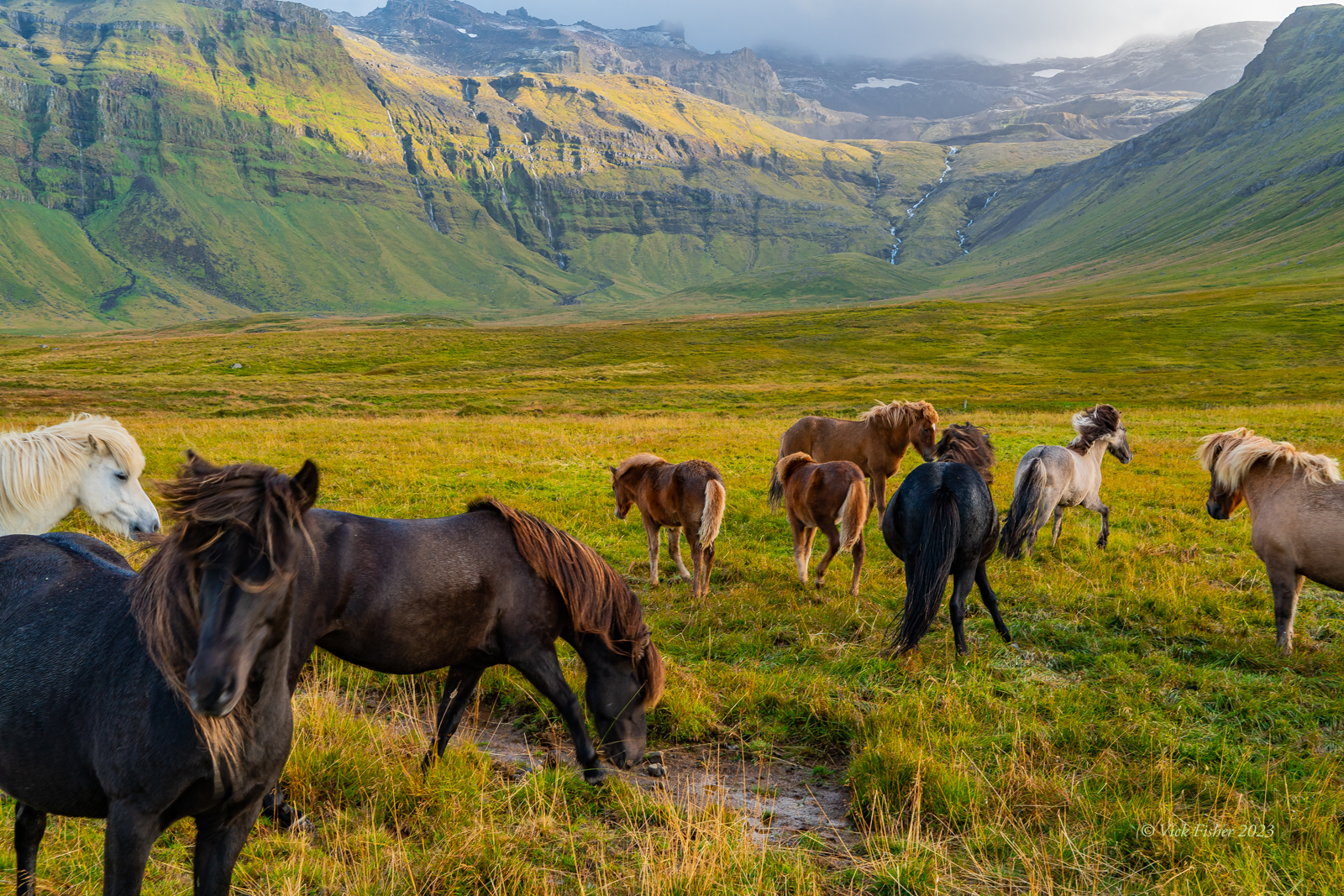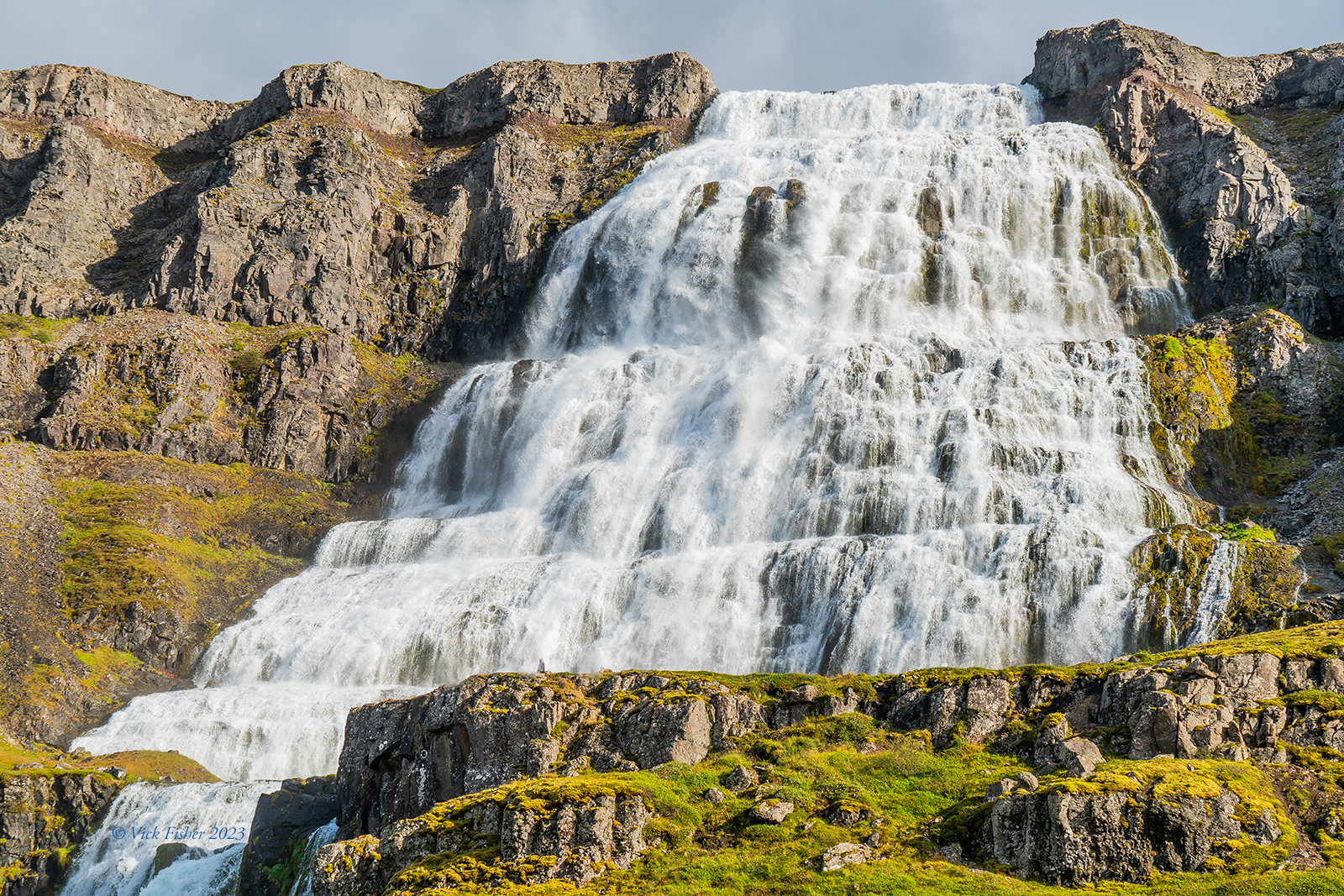As many of my friends know, I'm a huge ice-o-phile. We've visited glaciers and glaciated mountains all over the world, and I've always wanted to go inside an ice cave. But every time I tried, they would say
"It's not safe, the ice isn't stable, it might collapse and crush you!" Finally, I found a company in Iceland that wasn't so obsessed with risk.
So, we signed up for an all-day private tour, and that ended up giving us a truly rare experience. With a group, they need to cater to the least fit person, and they need room for everyone to fit inside. For our tour, we had the privilege of being the first guests to visit this ice cave, as the only other visit to the cave so far was by our guide going to explore it. To get there, we had to drive off-road in a "super jeep", which is a four-wheel drive SUV with gigantic tires that resist being bogged down in the deep, uneven gravel. This is the area where the glacier used to be, before it receded. So, we had to drive several miles to where the front of the glacier is now.
Once we parked the super-jeep, we had to get out and hike over a mile on the glacier itself. So, we strapped crampons onto our hiking boots to give them traction on the crunchy glacier ice. I love the crunch sound of every step when hiking on glaciers. It's such a satisfying sound that indicates you have a good grip in the ice, so you won't slip. Here we are hiking up - our guide brought two trainee guides with him that day, so we had three guides for two people. Jennifer's crampons are visible in the photo if you're looking on a decent-sized screen. The ice looks black because of all the volcanic ash that has fallen in recent years.
This is the deadly kind of place you don't want to slide into. It's called a moulin, and it's where melting water has created a hole in the glacier that goes deep inside and out the bottom, potentially thousands of feet from the entrance, since glaciers are typically that thick. That's astounding to me - to think of a mile-thick layer of ice.
As we approached the ice cave, our guide told us to wait while he explored the best way to get down to the cave. So, he left us alone on the glacier for twenty minutes or so while he looked around for a safe way to descend into the cave. Here's Jennifer hanging out beside a crevasse while we wait.
Finally, we saw our guide reappear over a rise and indicate we should follow him to the entrance. The cave is located along the very edge of the glacier, where the glacier meets the valley wall. Here's Mike walking out of the cave entrance and telling us to come on in and check it out.
He started taking photos of Jennifer to give us later. He and his partner are photographers as well as guides. This one is near the entrance.
Another one deep inside the cave. The vertical streaks in the photo are the melting water dripping from the ceiling. There are a few huge chunks of ice on the floor of the cave, which begs the question: when will the next huge chunk of ice come crashing down?! Here's another taken with me deep inside the cave, the guide in the middle, and Jennifer up near the entrance.
Meanwhile, I ignored the guide and took off to take photos of the ice. The ice was my canvas for abstract painting.
The colors varied, depending on how deep into the cave you were, further from sunlight. The rock of the valley wall is on the left in this photo.
I could have stayed for hours and taken hundreds of photos. I was totally entranced by the colors and the shapes, and the whole thousand-year process that created all of it. The white fuzz in the ice is bubbles of air, possibly trapped in there for centuries, or even millennia. The black is likely volcanic ash from past eruptions.
Snow fell, snow got packed denser and denser by more snow on top of it, year after year, while the entire mass slid inches per year out of the mountains toward the sea. In the meantime, seasons passed, volcanoes erupted, ash fell, over and over again.
There was an opening in the ceiling of the cave that allowed sunlight in. Here's Jennifer looking up toward the opening.
This is one of my favorite abstracts from the day.
Let's leave it at that for the ice cave, though I'm tempted to add many more.
This is the fourth in a series on our extensive tour of Iceland, going all around the Ring Road, and far beyond in the west, the north, and the east. It was a great trip.
To see more photos of the great natural wonders of Iceland, check out these other photo essays.
Follow this link for the Westfjords and two more of Iceland's most famous waterfalls.







































































